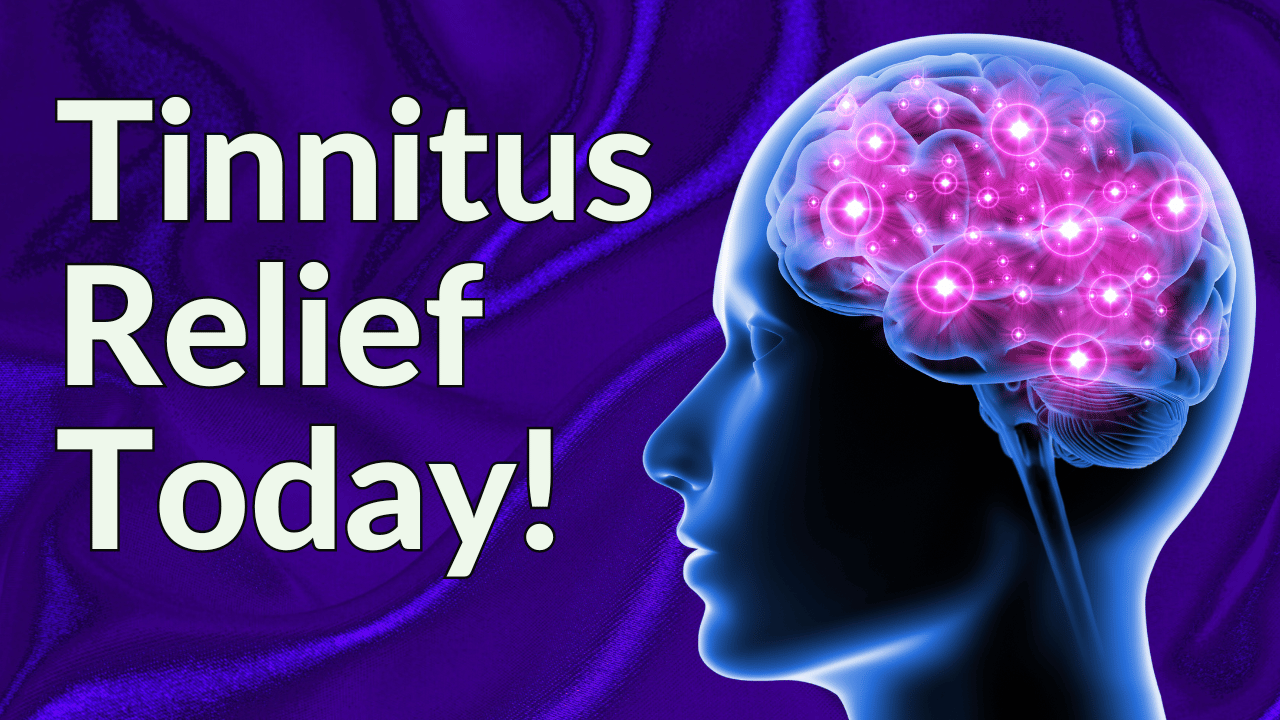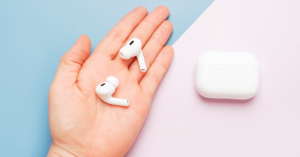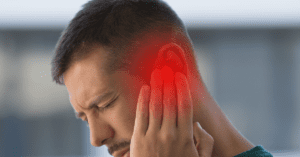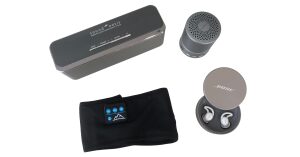Bimodal stimulation is a fancy name for a simple concept – a method of simultaneously providing two different modes of sensory stimulation. When it comes to tinnitus treatment, the currently used method of bimodal stimulation stimulates the auditory nervous system at the same time as the somatosensory neural pathways. The somatosensory system is a network of nerves in the body and brain that allow us to perceive touch, temperature, body position, pressure, and pain. It can be stimulated in a number of different ways, including movement, touch, or gentle electrical pulses near relevant nerves.
Why Stimulate Somatosensory Nerves To Treat Tinnitus?
The place in our brain where auditory information enters from the ear is a bundle of nerves called the Cochlear Nucleus. It can be found in the brainstem, which is where the base of our brain connects to the spine. This section also accepts information from somatosensory nerves in the face, tongue, jaw, and spinal column.
Research shows that pairing a sound with stimulation to the somatosensory nerves that send information to the Cochlear Nucleus can have an effect on the way nerves fire along the pathway after leaving the Cochlear Nucleus. It can even affect these nerves further along as the nerves carry auditory signals to higher levels of the brain, reducing the spontaneous firing of nerves.
"Treble Health helped me reduce my tinnitus by about 80%, and now I can live my life again!"

"Treble Health helped me reduce my tinnitus by about 80%, and now I can live my life again!"
– Steve D.
Book a free consultation to learn which Treble Health solution is right for you. Join Steve and thousands more who have found lasting tinnitus relief.
Having an increase in spontaneous and synchronized firing of nerves is thought to be how nerves encode tinnitus in the brain. Research has shown that this kind of firing of nerves along the auditory pathway is strongly correlated with measurements of tinnitus. Auditory nerves are very malleable, meaning they can be changed easily. It is believed that this can be utilized with bimodal stimulation to help treat tinnitus. Studies show promising results in reducing the severity of tinnitus.
Is There Evidence Showing That Bimodal Stimulation Is An Effective Tinnitus Treatment?
While there is some evidence that bimodal stimulation works, studies have not yet been repeatable or widespread. More evidence is needed through repeated studies.
A rigorous small double-blind study was done to evaluate whether bimodal stimulation had any effect beyond auditory stimulation alone. Double-blind studies are where neither the study participant nor the researchers know who is getting which treatment, generally leading them to be more accurate.
There were 20 participants in the study, each of which received bimodal stimulation. They received sound through headphones along with light electrical pulses on the cheek or neck for a period of four weeks. They also received just sound stimulation for four weeks. The results showed that when participants had both forms of stimulation, they had a reduction in both tinnitus loudness and related distress. This was not the case for when they received only auditory stimulation.
Other studies have looked at bimodal stimulation, but few have been strict in their testing processes. Although some have been large in scale, they haven’t necessarily tested bimodal stimulation against a standard or placebo treatment.
Two studies conducted by Neuromod Devices in 2020 and 2022 demonstrated that bimodal stimulation using sound combined with electrical pulses to the tongue worked for participants. This bimodal stimulation resulted in a significant decrease in tinnitus-related distress within 12 weeks of treatment. Additionally, this effect lasted 12 months after treatment for approximately 70-80% of the study participants.
What Devices Provide Bimodal Stimulation Therapy?
There are a few devices available for bimodal stimulation therapy for tinnitus, however some are only available in certain countries, and one is still in development. These include Neuromod’s Lenire, Neosensory’s Duo, and Dr. Susan Shore’s Michigan Tinnitus Device.
Neuromod’s Lenire Device
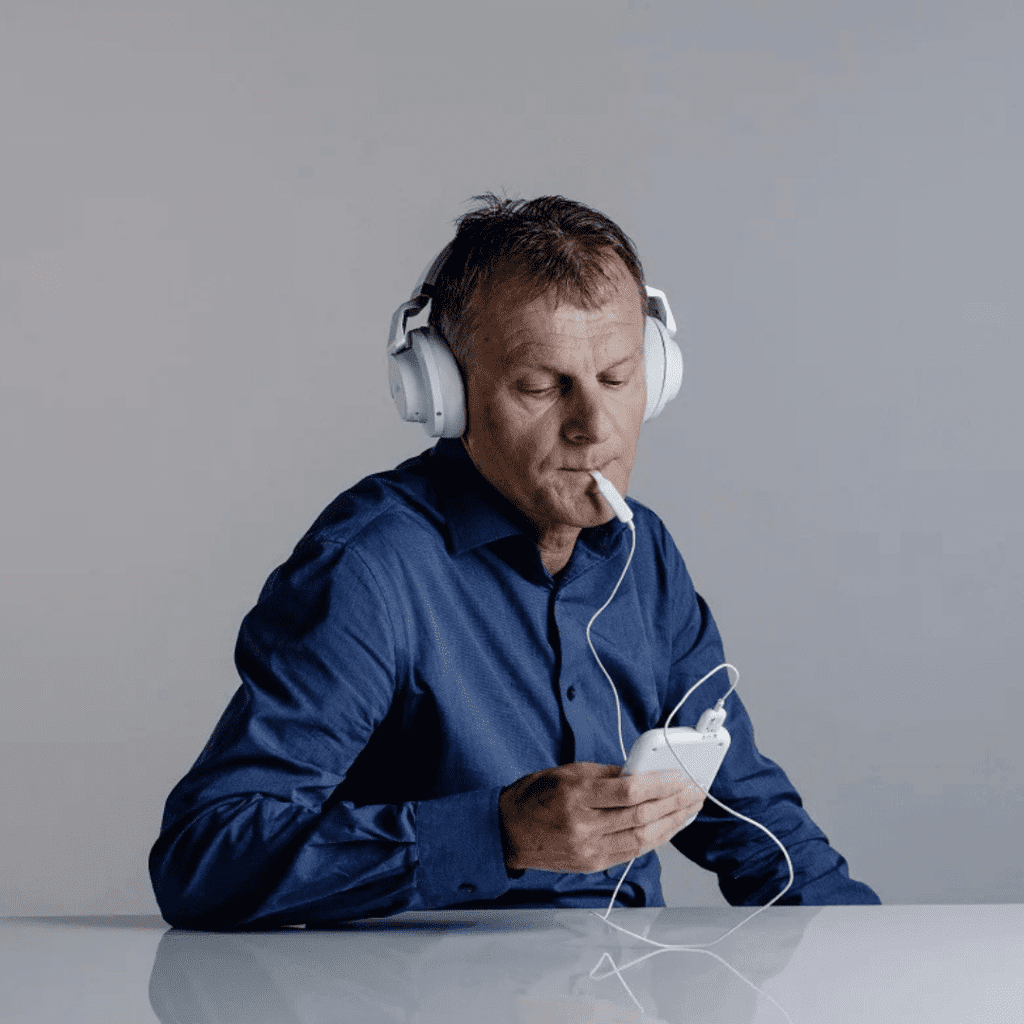
**Update: As of March 7th, 2023, Neuromod’s Lenire device has been granted FDA approval for bimodal stimulation, and can now be used by tinnitus patients in the United States.
Neuromod’s Lenire is commercially available in some countries, however, it is still pending FDA approval in the US and is not yet available here. The Lenire device uses electrical pulses on the tongue, along with sounds that are played through over-the-ear headphones. For maximum benefit, Neuromod recommends using this device for 30-60 minutes per day, for a period of around 12 weeks. Studies conducted by the company showed a 70-80% success rate in reducing tinnitus-related distress after treatment for up to 12 months. This product looks promising, so stay tuned for updates.
Dr. Susan Shore’s Michigan Tinnitus Device

Another device that is not commercially available anywhere, but is currently in clinical trials, is the Michigan Tinnitus Device created by Dr. Susan Shore’s lab at the University of Michigan. While it’s currently known as the Michigan Tinnitus Device, it may become commercially available under the name Auricle. Studies from Dr. Shore’s lab suggest that the device will use sound through headphones paired with light electric stimulation delivered to the cheek or neck. This treatment shows great promise.
Neosensory’s Duo Device
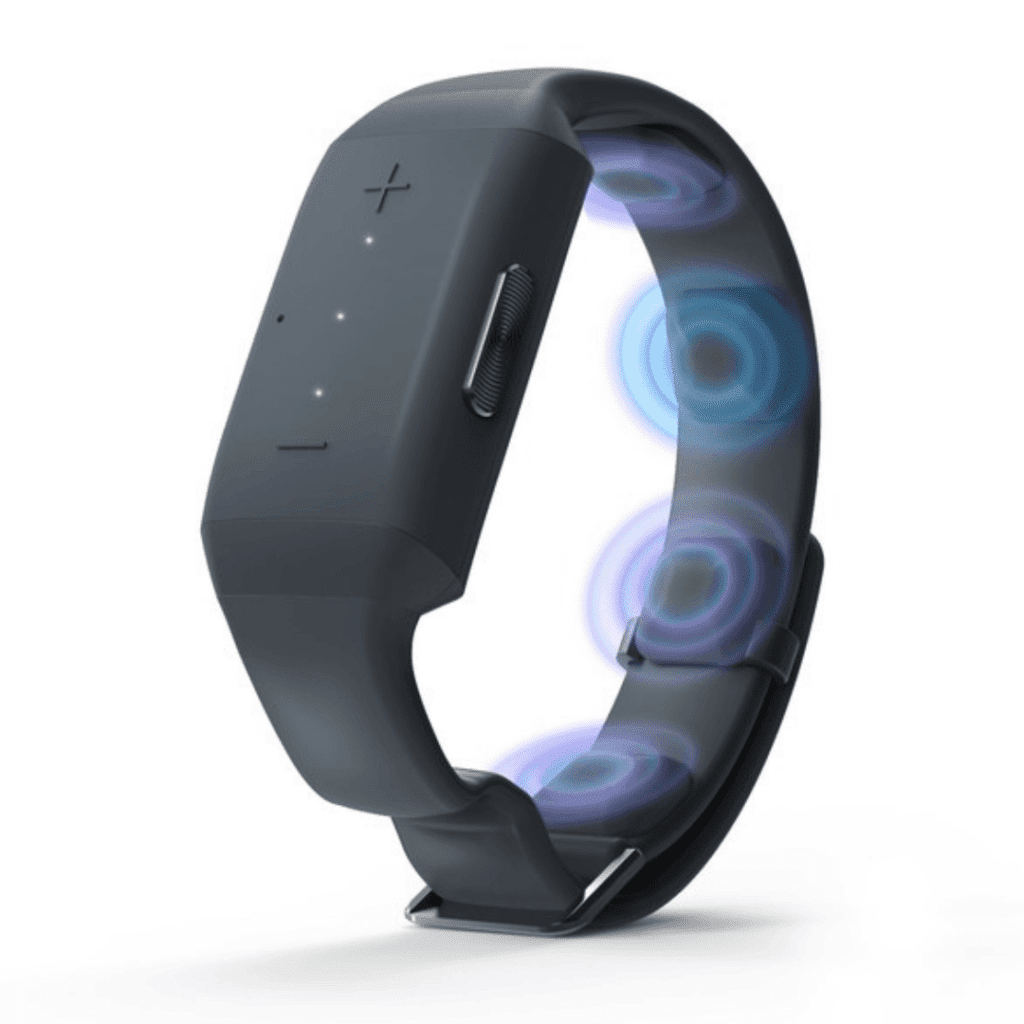
A device that is currently commercially available in the US is Neosensory Duo. This device uses sound through a phone app along with a wristband that sends vibrations at different places on the band that correspond to the tone being played on the app. It is recommended that you use it for 10 minutes a day for a period of eight weeks.
There has not yet been a peer-reviewed study of the device, but the Neosensory team has displayed a preprint of a paper showcasing a study that was recently done. It compared tinnitus distress scores after using the Duo to a group that heard only the tones without the bimodal stimulation. They claim that those who used the bimodal Duo device had a reduction in tinnitus-related distress, while the other did not.
What Else Is Out There for Bimodal Stimulation for Tinnitus?
Vagal (Vagus) nerve stimulation is another type of nerve stimulation that is under investigation to determine how effective it may be when paired with sound stimulation. Vagal nerve stimulation is often achieved with an implantable device, so it is typically more invasive than electric pulses or vibrations on the skin, the non-invasive bimodal stimulation we talked about earlier. A non-invasive device to stimulate the vagus nerve from outside the ear has also been used in some studies and may be the subject of further research.
Currently, there is not sufficient and consistent evidence that vagal nerve stimulation provides an improvement in tinnitus. One 2017 study demonstrated that using vagal nerve stimulation paired with auditory tones had a greater impact on tinnitus-related distress than vagal nerve stimulation alone. A few other studies also suggest that pairing sound stimulation with vagal nerve stimulation improves its efficacy in tinnitus treatment. However, there simply is not enough research to support the use of vagal nerve stimulation at this point in time. Further independent and rigorous research is needed in this area. As of now, the best tinnitus treatment plan is through a combination of sound therapy, tinnitus maskers, and coaching from a tinnitus specialist – all of which are included in our Treble Health treatment program.
Conclusion
While not a cure, bimodal stimulation to the auditory and somatosensory nerves may be able to provide significant and lasting relief from tinnitus symptoms. It also doesn’t have any significant side effects. However, at this time, there is insufficient research to support the use of bimodal stimulation over other therapies, such as cognitive behavioral therapy (CBT) or sound therapy with counseling.
If you are looking to try bimodal stimulation therapy and it is available to you, it may be worth considering adding other standard tinnitus treatments such as sound therapy or cognitive behavioral style support. These also provide coping tools during your treatment and throughout your journey with tinnitus. Click here to see if you are a candidate for tinnitus treatment, and our team of audiologists at Treble Health can assist in creating a treatment plan that works best for you.
Next Step: Book Free Consultation
- 75% of patients reduced their tinnitus within three months after following our recommendations.
- "I feel like Treble Health literally gave me my life back." - Randy S. (verified customer)
- Join thousands of people who have reduced their tinnitus after scheduling a free consultation.






